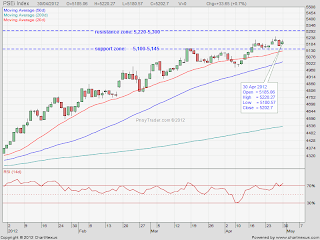French student Laura Samzun attends a one-on-one English class at Cebu Pacific International Language school in Cebu city in central Philippines July 6, 2012. Photo by Erik De Castro - Reuters
'It's less expensive to go to the Philippines, to come back (to) France, and to pay school than to stay in France (for that time),' French student says
CEBU, Philippines — In the Philippines, English language courses come with poolside classrooms, field trips to the beach, and instructors doubling as tour guides.
English is widely spoken in the former American colony, and language proficiency schools have mushroomed across the country, catering to an expanding market of Asian and European students looking to combine English learning with tropical tourism.
French student Laura Samzun will soon be taking a test to enter a public college in the United Kingdom, and is under pressure to perfect her English. She chose to take classes in the Philippines due to lower costs.
"It's less expensive to go to the Philippines, to come back (to) France, and to pay school than to stay in France (for that time)," Samzun said.
Fresh from a backpacking trip in Indonesia, she kick-started her courses in June at the Cebu Pacific International Language School on the sunny central island of Cebu.
"I really wanted to see Asia, to travel. So I can travel and study (at) the same time. It's a good thing," the 22-year-old Toulouse native said.
There are some 500 schools offering language proficiency programs around the country, and one-fifth are in Cebu. The island's proximity to white sand beaches and its laid-back provincial lifestyle are a big draw for foreign students, who mostly come from big industrial cities.
The schools boast high quality education, with small student-teacher ratios that allow for more focused instruction.
In four months of English proficiency courses, Chinese nurse Flora Wang has progressed from near-zero comprehension to carrying a conversation with ease.
"Actually really getting better. When I came here, I can't speak and understand anything. But during the four months, I improved a lot," said the 25-year old Beijing native who plans to move to the U.S. to study health care.
Wang recently finished her course at Cebu Pacific International Language School (CPILS), one of the pioneers of English language education in the Philippines.
CPILS accommodates around 450 students per course period, mostly from South Korea. The student population has ballooned from 60 students when the school opened 11 years ago, and their pool has expanded to include enrollees from Japan, China, Taiwan, and European countries like France and Russia.
Park Yoon Jae, a university student from Seoul, wants to land a job back home in a multi-national company, where English is a primary requirement.
"Especially these days, (in) Korea, we have to speak English very well. Because almost all company want very high level English skills," Park said.
The intensive English course work in CPILS runs an average of four months, in which students can take up to seven hours of lessons each day. A one-month course can cost around $1,000 a month, including accommodation and food.
Value-for-money
In Cebu, campuses are equipped with a pool and a fitness gym, with some offering yoga classes and dance workshops. The beach is just a half-hour ride from the city, and schools arrange island-hopping trips or diving lessons on weekends.
The success of English-proficiency schools around the country has prompted the Philippines' tourism department to launch the English-as-a-Second-Language (ESL) Tour Program, tapping key markets like South Korea, Japan, and Russia where the demand for English-learning is high.
South Korean students of Cebu Pacific International Language school prepare to snorkel during a beach outing in Cebu city in central Philippines July 7, 2012.. Photo by Erik De Castro - Reuters
"This is where the Philippines can be very competitive. We have World Heritage sites, white sand beaches, you have spas, you have dining and shopping," Benito Bengzon, assistant secretary for international tourism promotions, told Reuters.
The Philippines aims to hit 4.5 million international tourist arrivals this year, a fraction compared to neighboring Thailand or Malaysia. But English learning-tourism is unique to the Philippines, and Bengzon said the sector can grow by 10 to 15 percent among Asians, and up to 25 percent among Europeans.
The pitch is that the Philippines is a good alternative to Australia, the United States or the United Kingdom because it is closer to Asian countries and also because the whole experience, from education to extra-curriculars, is value-for-money.
"The message here, apart from the tourism component is that it shows to the world our proficiency in English, our competitive advantage, and of course you can already mix it with the fun and enjoyable and memorable part of it," Bengzon said.
The famed Filipino hospitality, inside and outside the school, is another plus for the students.
"There are 200 or 300 teachers. So I have many chances to go out with them. And while I'm enjoying my time, I can study English with them at the same time," said Yu Kitaoka from Japan.
MSNBC.com


























